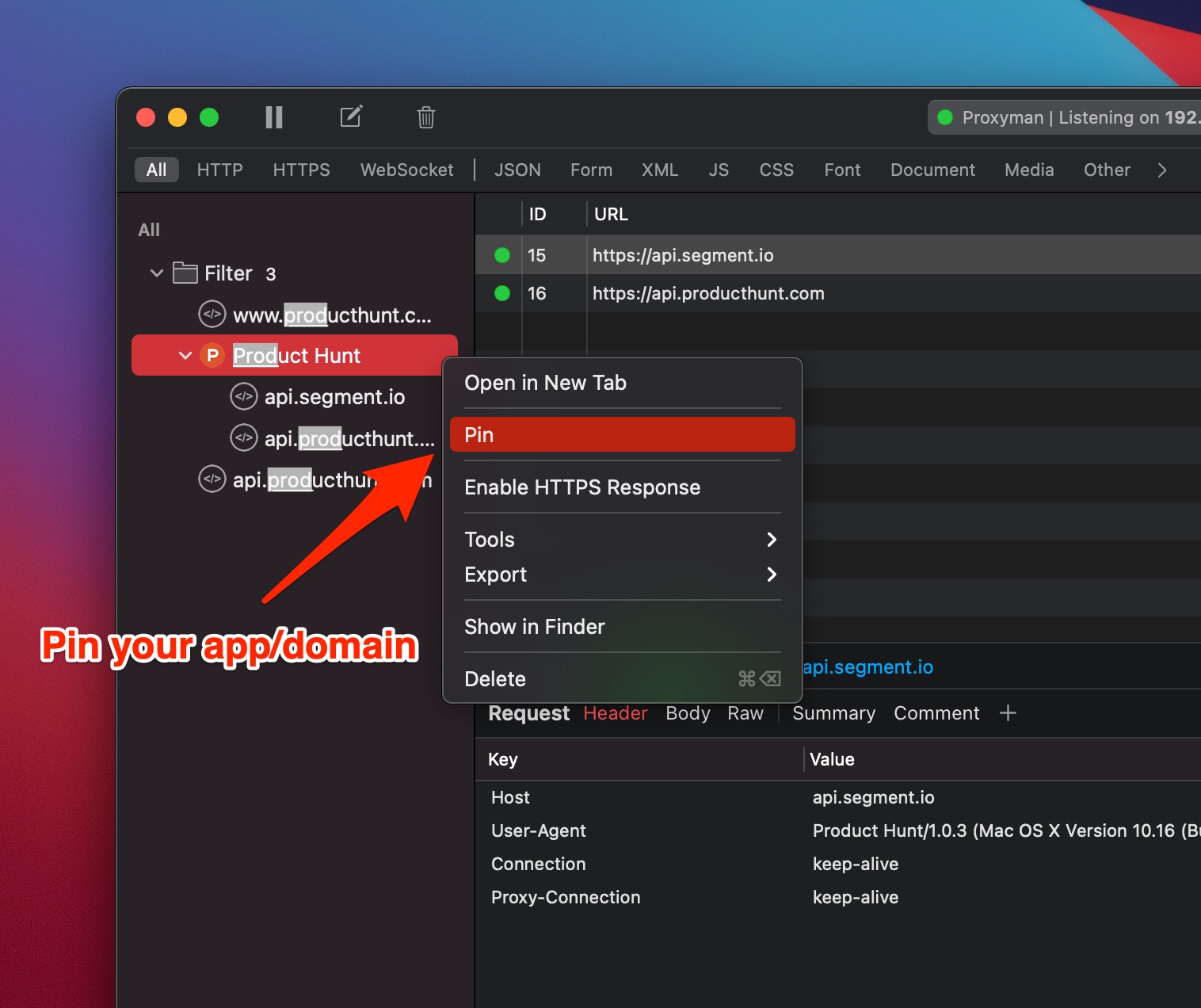
- #Proxyman for mac for mac
- #Proxyman for mac install
- #Proxyman for mac license
- #Proxyman for mac download
- #Proxyman for mac free
When you first launch Proxyman, it will prompt you for some setup steps and eventually Proxyman will want to install a helper tool. Once you’ve downloaded Proxyman, install it by opening the dmg and dragging the app to your Applications folder.
#Proxyman for mac license
After that you can continue the last version that became available during the year, or buy a new license for another year of updates.
#Proxyman for mac free
Luckily, a single license is valid forever and entitles you to a year of free updates. However, Proxyman isn’t a free app and if you want to use all its features you’ll need to purchase a license.
#Proxyman for mac download
The download for Proxyman is free, and the free version of the app is perfectly usable to explore and learn about debugging your app through a proxy. You can do this right here on their website. To use Proxyman, you must first download and install it. Over time I’ve come to prefer Proxyman for debugging because it’s a nicer app and it’s just a bit easier to set up. 💡 Tip: I’ve written a similar post to this one about Charles Proxy that you can read here. In this post, I will show you how you can gain insight into the requests that your app sends to the server as well as see the responses that the server sends to your app. Especially when you’re dealing with setting HTTP headers and/or multipart form requests. When the response you receive is wrong, or not quite what you expected, you’ll want to take a look at the data you’ve sent to the server to make sure you’re not sending it bad data. However, a large response will be hard to read in Xcode’s console so you might have to paste it elsewhere, like in a JSON validator. The most simple method would be to convert the data that I’ve fetched from the server to a String and printing it. But when I notice that things don’t work quite as expected, it’s time to start digging in and debug my network calls.
#Proxyman for mac for mac
Keep an eye out for other integration opportunities as well as there is more than one AD password management product for Mac environment.When this all works well, everything is great. In a word, it's brilliant for Mac SOE enterprise deployments who want to utilise this product. When the credentials are updated it will automatically detect, validate and use them without the need for any user intervention.Īdding this feature allows proxyman to automatically pickup any password changes for the user via Jamf so they are never bothered again with proxy passwords. When it comes to invalid credential it wont cause user account lockouts because the first proxyman thread to encounter failed credentials will share that information so no other threads will attempt to authenticate using them. Smart handling means proxyman can automatically detect and use any new user password as it is supplied directly from the keychain value. If not it will ignore the 401 response let go on it way back to the calling application. If successful, mark it as valid and the processing is done. If changed it will attempt to use the new credentials once. Triggered by 401 authentication it reads the current value, computes the hash as normal but seeing it has been marked invalid will check if the hash value has changed before overwriting the old value. the smart handling here is proxyman never stops reading the keychain value. In the case of the keychain the user can unlock by clicking the key icon (with a warning) however. The user can unlock the failed password by changing it. The main proxyman ui thread will updated the key icon when it sees this, such as overlaying a red circle with line through the key icon. If they fail, it marks the credentials as invalid so no other proxyman thread can use them. When proxyman encounters a 401 on the proxy connection it supplies the credentials stored locally or in the keychain case, the username locally and the password directly from the keychain value, updating its local hash as it does. Doing this triggers one-off MacOS keychain access prompts which the user should select always allow. Clicking this brings up the dialogue to specify a keychain entry which the user selects and proxyman then tries to read the value and store a hash. Next to the password field is a key icon. One set of credentials (typically AD) can be specified for the PAC file as a username and password field.

PAC file proxy auth capability using provided credentials (typically AD) with option for using keychain for password (key icon next to pw field) so we can use credentials stored by Jamf Connect (Formerly NoMAD).


 0 kommentar(er)
0 kommentar(er)
